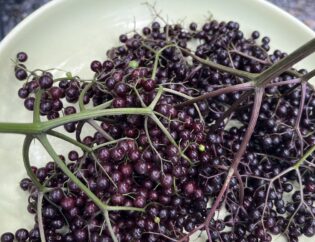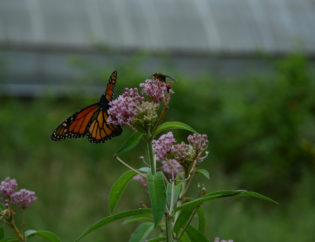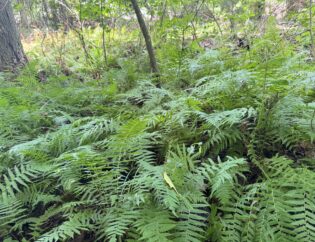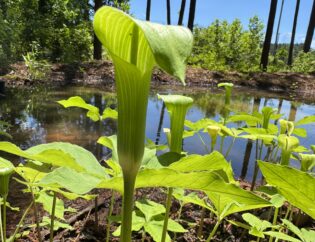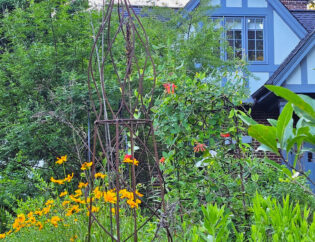After months of talking about it and several test batches at my house I began brewing compost tea for the farm today. Most of what I learned about brewing actively aerated compost tea (AACT) is contained in the book Teaming With Microbes by Jeff Lowenfels & Wayne Lewis and on several websites based on the work of Dr. Elaine Ingham. Those are both much better places to learn the hows and whys of composting and brewing compost tea; this is the story of me (hopefully) applying that knowledge to fertilize our plants.
The basic idea behind compost tea is that in properly mixed and ‘cooked’ compost there is a thriving community of microorganisms that enhance plants’ ability to take in nutrients. By brewing a solution of water, oxygen, and some of the foods these microbes require one can encourage their health and reproduction. By spreading these increased populations onto the soil near your plants via a hose siphon you encourage or found a diverse community of bacteria, fungi, nematodes, etc. that will aid your plants. There are many fascinating and complex interactions in the root zones of plants that are worth much further reading on the subject. That is a short summary of why we wanted to do this, so onto the how.
After acquiring all the equipment necessary for this endeavor I had to modify and assemble the components. First, I cut a circular hole in the top of our 55 gallon plastic drum. I left the rim on to help the barrel retain its round shape, but cut out a large enough opening to allow a large bag of wet compost to exit. Next, I assembled the hoses for the air pumps. We have a large air pump for the bottom of the barrel and a smaller one to pump air into the bag of compost to force those microbes out into the water. I used clear vinyl tubing from each pump and then used barbed connectors to attach a length of soaker hose to each tube.
I used twine and a piece or rebar to hold the bottom soaker hose in a figure eight shape to maximize the distribution of bubbles. The rebar also acts as a weight to keep it on the bottom of the barrel when the air is flowing. Here is the hose in the barrel full of water:
When the air is on it’s a column of bubbles.
The mesh bag we are using to hold the compost suspended in the solution was designed to hold grains for homebrewing beer, so I figured it would be fine for brewing this tea as well. I cut a small hole to allow the tube to feed through and assembled the soaker hose inside the bottom of the bag.
With the components assembled, I mixed my brew.
In the barrel:
- 45 gallons well water
- 2 cups of liquid seaweed
Into the bag went:
- 6 lbs. finished compost
- 1 lb. worm castings
- 1 lb. finished mushroom compost
- A couple rocks (to keep the bag submerged)
Conspicuously absent from this recipe is alfalfa meal. In the future I’m going to use about 3-4 pounds of dried alfalfa meal pellets to add a good dose of nitrogen and hopefully the nitrogen fixing bacteria that symbiotically grows with alfalfa. One more optional ingredient is some sort of simple sugar like molasses, malt extract, or dextrose. This feeds the microorganisms and jump starts the multiplication process. I’ve read conflicting accounts as to whether or not sugar is necessary and what it does to the make up of the final tea, so I left it out for this batch, but might experiment with it in the future.
Now that it’s all assembled, the bag goes into the liquid.
Turn on the air pumps!
After about 20 minutes…..
A LOT of foam!
It didn’t foam over too much, but I put a tarp under it to catch all the drippings. This bubbled away for 24 hours and then I used our hose siphon to spray five gallons at a time onto the nursery plants. I poured the remaining 20-30 gallons onto the front propagation beds. It’s a shame there are no pictures of me after that because I was covered all down the front of my shirt and pants with compost tea.
There it is, our first use of compost tea on the farm. I’ll continue to share new recipes and maybe do a side by side of two plants, one with tea and one without, next growing season. Give it a shot at home sometime, all you need is a pump and air stone for a large aquarium and a five gallon bucket!






